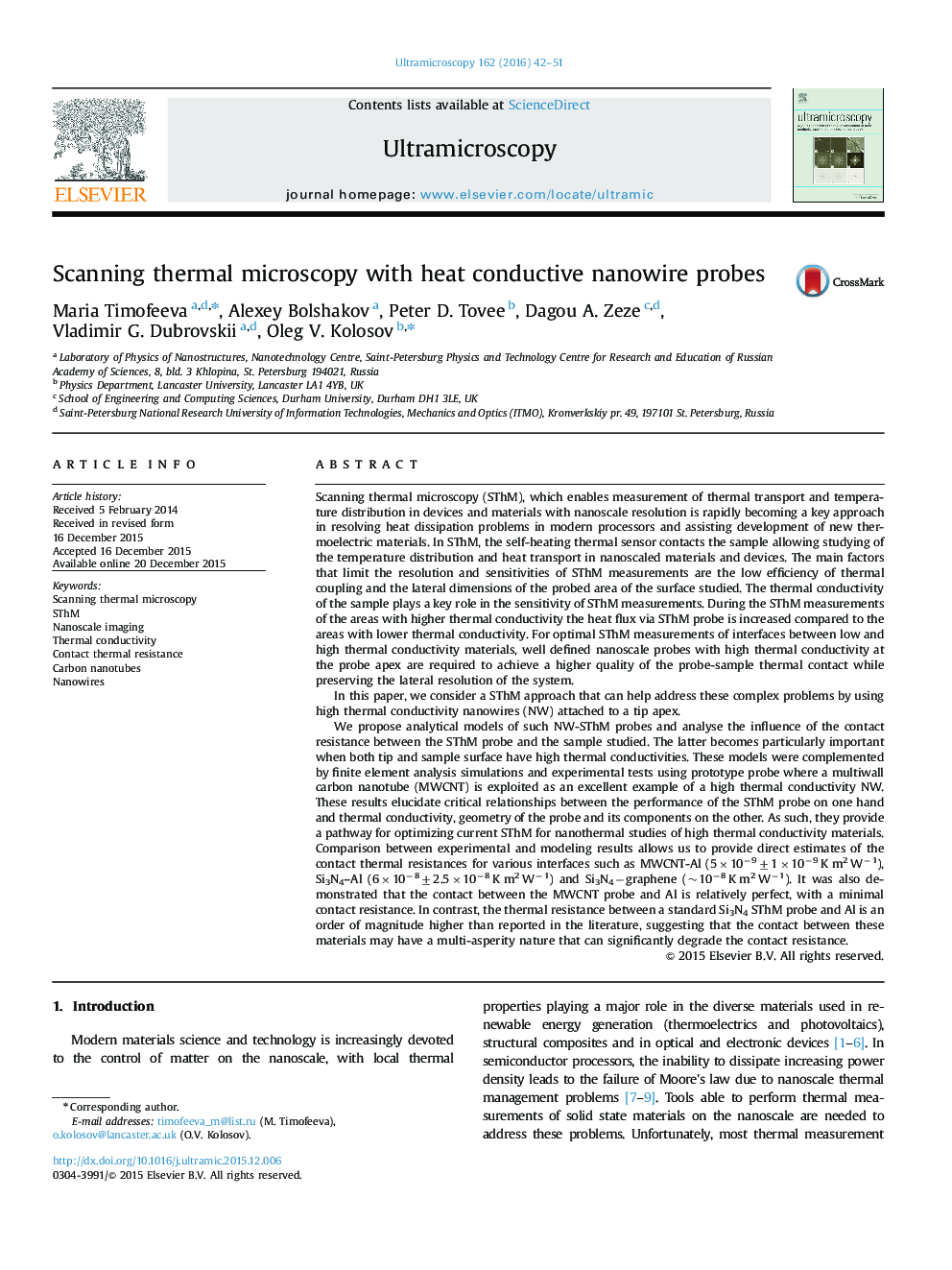| Article ID | Journal | Published Year | Pages | File Type |
|---|---|---|---|---|
| 8037945 | Ultramicroscopy | 2016 | 10 Pages |
Abstract
We propose analytical models of such NW-SThM probes and analyse the influence of the contact resistance between the SThM probe and the sample studied. The latter becomes particularly important when both tip and sample surface have high thermal conductivities. These models were complemented by finite element analysis simulations and experimental tests using prototype probe where a multiwall carbon nanotube (MWCNT) is exploited as an excellent example of a high thermal conductivity NW. These results elucidate critical relationships between the performance of the SThM probe on one hand and thermal conductivity, geometry of the probe and its components on the other. As such, they provide a pathway for optimizing current SThM for nanothermal studies of high thermal conductivity materials. Comparison between experimental and modeling results allows us to provide direct estimates of the contact thermal resistances for various interfaces such as MWCNT-Al (5Ã10â9±1Ã10â9 K m2 Wâ1), Si3N4-Al (6Ã10â8±2.5Ã10â8 K m2 Wâ1) and Si3N4âgraphene (~10â8 K m2 Wâ1). It was also demonstrated that the contact between the MWCNT probe and Al is relatively perfect, with a minimal contact resistance. In contrast, the thermal resistance between a standard Si3N4 SThM probe and Al is an order of magnitude higher than reported in the literature, suggesting that the contact between these materials may have a multi-asperity nature that can significantly degrade the contact resistance.
Keywords
Related Topics
Physical Sciences and Engineering
Materials Science
Nanotechnology
Authors
Maria Timofeeva, Alexey Bolshakov, Peter D. Tovee, Dagou A. Zeze, Vladimir G. Dubrovskii, Oleg V. Kolosov,
